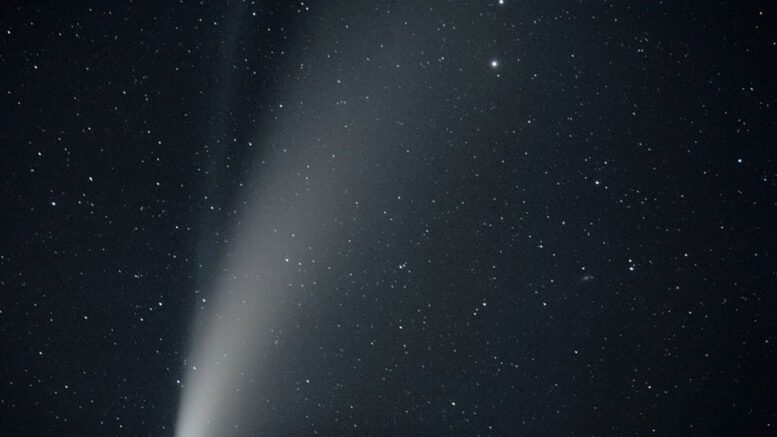When shooting Comet NEOWISE and viewing it, we can see the progression in the viewing from the earliest days that it was viewable to the photo taken yesterday. Other than the image quality getting better after time to refine the image taking and editing process, we noticed a few differences to help you spot some detail and learn how the viewing of NEOWISE changed.
- Timing
As the comet changed from being visible only in the early morning, at like 3:30am to 4am, to being available in the late evening right after sunset, there became more opportunities to view the comet. It is easier to go after work than it is to get up early to view the comet. After becoming visible at 11pm, the comet Neowise also changed in brightness and required a bit more work to photograph. - Brightness
As Neowise moved from being an early morning to late night comet, wee noticed that the comet was becoming not as bright. This meant that it was a bit harder to view the comet and required a longer exposure time and higher iso to image it. - Photographing Neowise
Things we learned while imaging Neowise with a DLSR was to focus on an object like Jupiter earlier in the night and then move the camera to point at Neowise. This would allow the camera to provide the best photo in regards to quality and focus. We also bumped up the time spent imaging from 3 to 4 seconds to around 8 seconds and it really showed. - Nucleus
When we have viewed the nucleus through a 6 inch Celestron SCT and through the cameras, we have noticed that the comet nucleus has obtained a slightly greenish hue.
For the tips and tricks for viewing Comet NEOWISE, check out this article. For details on the comet, check out this article on the subject. Don’t forget to check out our instagram at www.instagram.com/cosmospnw

Be the first to comment on "NEOWISE Viewing Trends And Thoughts"